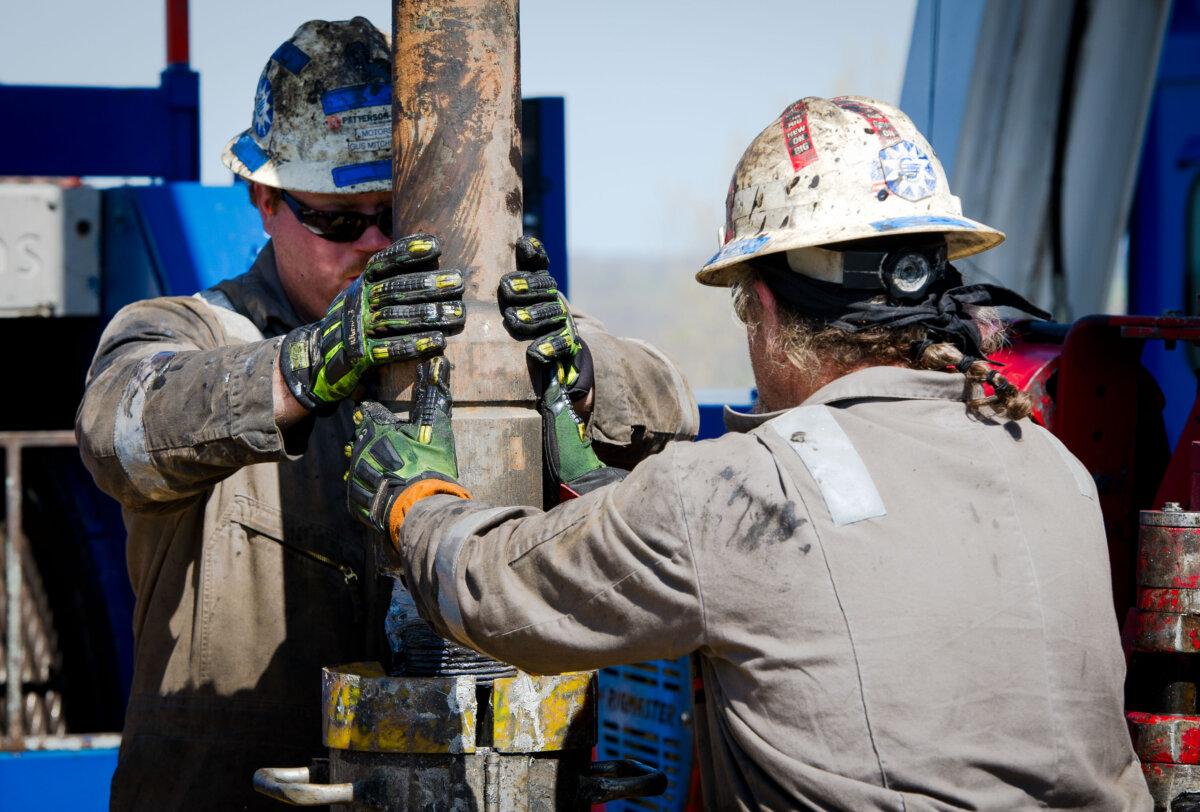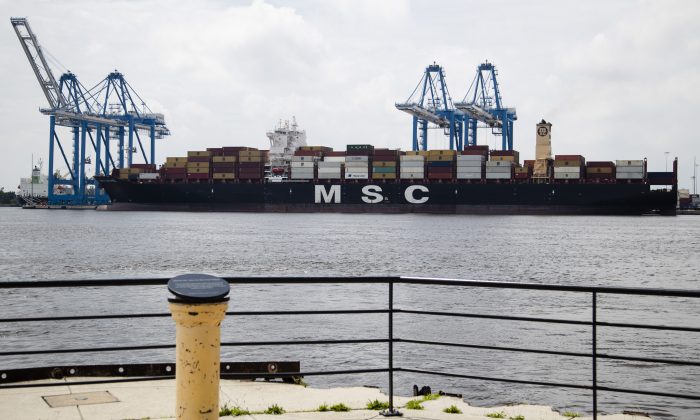Pennsylvania operators say they could significantly boost production with a new port to ship overseas and more pipelines to move gas into New England.
PITTSBURGH—President Donald Trump’s national energy emergency declaration and repeal of the Biden administration’s liquefied natural gas export permit pause have revived prospects of building an export terminal in the Philadelphia area.
It would be the first gas export port on the United States’ Atlantic coast and would expand markets for operators in Pennsylvania, West Virginia, and Ohio, who say their output is constrained by the lack of pipelines in New York and New England, and by maxxed-out capacities to funnel gas to Gulf of America export terminals.
“We believe the market demand in Europe suggests that there could be more export facilities here on the East Coast, specifically in the Philadelphia region,” Marcellus Shale Coalition President Jim Welty said. “The proximity to the product here in Pennsylvania, and the proximity of a port in Philadelphia to Europe, makes all the sense in the world” for a mid-Atlantic export port.
The coalition represents more than 140 Pennsylvania “unconventional” producers operating nearly 70,000 active wells that extract gas from deep shale formations by hydraulic fracturing, or fracking.
They and “conventional” vertical drillers affiliated with the Pennsylvania Independent Oil & Gas Association spearhead the Keystone State’s $42 billion natural gas industry—the nation’s second-largest producer by state—which directly employs nearly 125,000.
That production and economic impact could be significantly increased with an export port and expanded pipeline capacity, Welty said.
“We have such great supply, but we don’t have the infrastructure to get it to market,” he told The Epoch Times. “So if there’s one thing that we need more of in the Appalachian Basin, and specifically here in Pennsylvania, is pipelines” to move product to more markets, including overseas.
Right now, there are eight operating liquefied natural gas export terminals in the United States, all in Texas and Louisiana.
Six more Gulf of America projects have been approved, with more planned. A state-sponsored export terminal at the end of an 800-mile Alaska pipeline and a revived Oregon project are vying to be the first U.S. West Coast LNG ports.
The relatively small Cove Point export terminal in Lusby, Maryland, has been in operation since 1978, primarily for gas imports. A decade ago, it was modified to export Pennsylvania gas, but its capacity cannot be expanded.
Proposals to build an export terminal in the Philadelphia area along the Delaware River have been circulating since at least 2017, with sites in Chester and Marcus Hook in Pennsylvania, and in Gibbstown, New Jersey, among prospective projects.
“It’s been hope and a dream for a long time,” Pennsylvania Independent Oil & Gas Association President and Executive Director Dan Weaver said. “We’re working on it.”
The association’s 375 members, which also include oil producers, storage managers, and field service providers, aren’t expecting to see state lawmakers approve a Delaware River export terminal anytime soon.
“We don’t know how real it is. We’ll see,” he told The Epoch Times. “There are a lot of roadblocks to overcome.”

Local Opposition
The Pennsylvania General Assembly created the Philadelphia LNG Export Task Force in 2022 to address the “existing obstacles, economic feasibility, economic impact and the security necessities” related to building an export terminal in the Port of Philadelphia.
The task force issued a November 2023 report supporting a terminal in southeast Pennsylvania with New York-based Penn America Energy’s $8 billion, 100-acre proposed liquefaction plant and export terminal in Chester, 13 miles downriver from Philadelphia, the most feasible among potential sites.
Developing gas export terminals, especially in Chester, has drawn rigorous and widespread opposition orchestrated by the Clean Air Council, Chester Residents Concerned for Quality Living, Delaware Riverkeeper Network, and the Pennsylvania chapter of the Sierra Club.
Critics argue the 2023 report included none of the concerns expressed in public hearings by residents in the southeast Philadelphia area and that opponents were rebuffed in requests for representation on the task force, which it maintains is exclusively manned by industry interests and sympathetic lawmakers.
A minority report authored by dissenting task force member Pennsylvania state Rep. Joseph Hohenstein, a Democrat, called the export terminal proposals “dangerous” and “technically infeasible.”
“This is a complex topic with many stakeholders holding a variety of views and strong opinions,” Hohenstein wrote. “And it is my belief that [his] report accurately addresses the concerns with placing an LNG facility within the geographical area covered by the Philadelphia Port, resulting in the conclusion that there is simply no suitable location for an LNG facility in Philadelphia or southeastern Pennsylvania” in Chester or Marcus Hook on Delaware Bay.
Opponents say building a gas export terminal near heavily congested urban areas will increase childhood asthma rates, among other air quality concerns, and noted that large LNG carrier ships would need to negotiate shallow, narrow river spans to get to Chester, Philadelphia, or further north in Gibbstown, New Jersey.
Environmental groups dismissed the task force’s report as an example of what Texas A&M University Professor John Crompton’s 2006 study posited: “most economic impact studies are commissioned to legitimize a political position rather than to search for economic truth.”
They said more pipelines would need to be built to move gas to the port, increasing methane emissions and the potential for spills and explosions.
Pipelines, however, are a better option than moving liquefied natural gas by rail or truck, gas operators maintain them, and the lack of pipeline capacity is not only preventing Pennsylvania producers from exporting more overseas but also hindering the supply of natural gas for domestic electricity generation, especially in the Northeast.
“One hundred percent. I’d say it is the biggest issue,” Weaver said. “Adding pipeline capacity is absolutely critical in getting gas to the market.”

New Pipelines
The biggest market Pennsylvania producers want to access is New England, where energy costs are the highest in the nation—New Englanders paid on average 40 percent more for electricity in 2024 than they did in 2023—because states have adopted regulations that favor renewable energies and New York’s 2019 Climate Leadership and Community Protection Act effectively blocks any effort to build a gas pipeline north.
Under the law, New York regulators have rejected at least four proposed natural gas pipeline projects in the last five years, including Williams Companies’ proposed Constitution Pipeline, a 124-mile pipeline that would have funneled natural gas from Pennsylvania to an Albany distribution hub and into New England.
Williams Companies scrapped its Constitution pipeline in 2020 after New York regulators shot it down, but Trump is among those advocating for the pipeline project to be revived.
“We are going to get this done, and once we start construction, we’re looking at anywhere from nine to 12 months, if you can believe it,” Trump said during a February Oval Office press briefing. “It will bring down the energy prices in New York and in all of New England by 50, 60, 70 percent.”
The pipeline was among issues Trump and New York Gov. Kathy Hochul discussed in a March White House meeting.
With New York regulators in February approving an “enhancement project” by the Iroquois Pipeline Company to build two compression stations on its 416-mile natural gas pipeline to move more gas from Ontario into New York City, it appears opposition to pipelines may be waning, industry advocates say.
“We’re pleased with the reconsideration of the Constitution pipeline,” Welty said. “We are so well-situated in Pennsylvania to be fueling New England because of the proximity, but because we have not been able to get pipe in the ground through New York, New England residents are paying exponentially more for their power, and they’re also basing much of their heating off of oil.”
“New England is clamoring for more energy, but pipelines are at max capacity—there’s no room to move more molecules,” Weaver said. “We’re starting to see some dialogue changing, which I never thought would happen.”
But, again, he doesn’t expect anything to happen anytime soon. “There will be thickets of legal and administrative challenges [to get through] before anything happens,” he said.
While Welty and Weaver praised Trump’s overall energy policies, they said that without the ability to move product from field to furnace, it’s not going to happen.
“Of the last 10 major pipelines that have been proposed here in the Appalachian Basin here, nine of them have been canceled,” Welty said. “The last one, the Mountain Valley pipeline, took an act of Congress, and that pipeline is already at full capacity. It just went operational last summer. That shows you the demand, the level of demand, and the need for infrastructure.”
“We are very supportive of the type of perspective” espoused by the president, Weaver said. “But we need pipe, baby, pipe before we can drill, baby, drill.”

